Commissioned in 1942 as an ice patrol tender, USCGC Storis was assigned to the North Atlantic during World War II. She was assigned to patrol the east coast of Greenland to prevent the establishment of German weather stations.
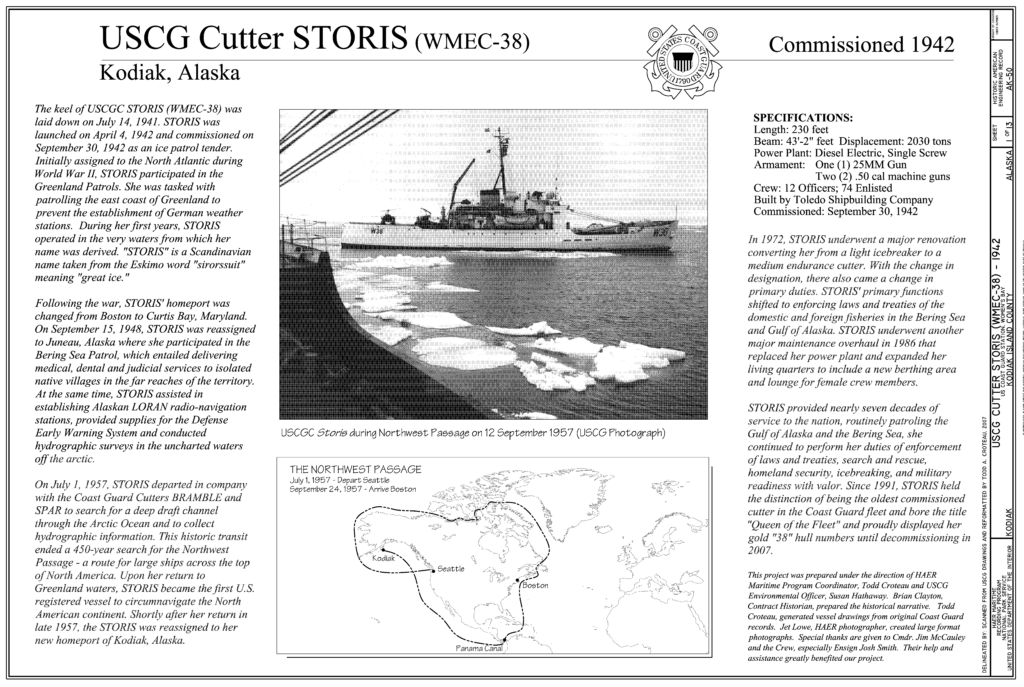
In 1948, she was reassigned to Alaska for the Bering Sea patrol, delivering medical and judicial services to isolated native villages. She also assisted with the establishment of LORAN radio-navigation systems and the Defense Early Warning System, and conducted hydrographic surveys in uncharted arctic waters.
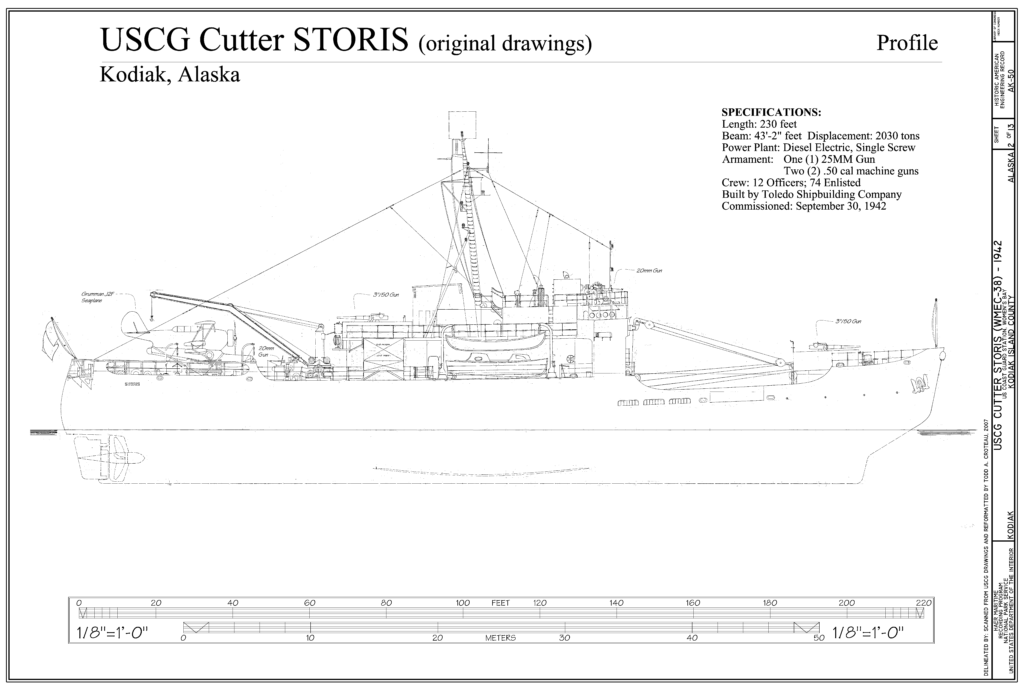
In 1957 she and two other coast guard cutters completed a historic transit of the Northwest Passage across the seas north of the North American continent. Returning to Greenland waters, Storis became the first U.S. registered vessel to circumnavigate the North American continent.
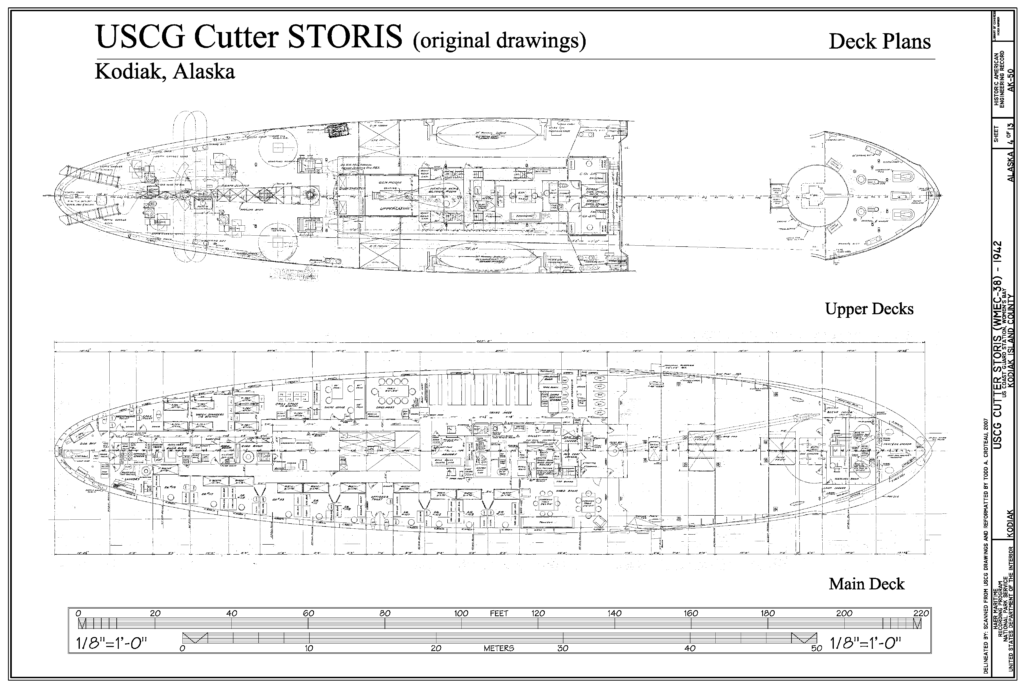
In 1972 Storis was converted from a light icebreaker to a medium endurance cutter, shifting her duties to law enforcement in the Bering Sea and Gulf of Alaska. In 1986 she underwent another overhaul that replaced her power plant and expanded her living quarters to accommodate female crew members. In 1991 she became the oldest commissioned cutter in the Coast Guard fleet, a title she held until she was decommissioned in 2007.
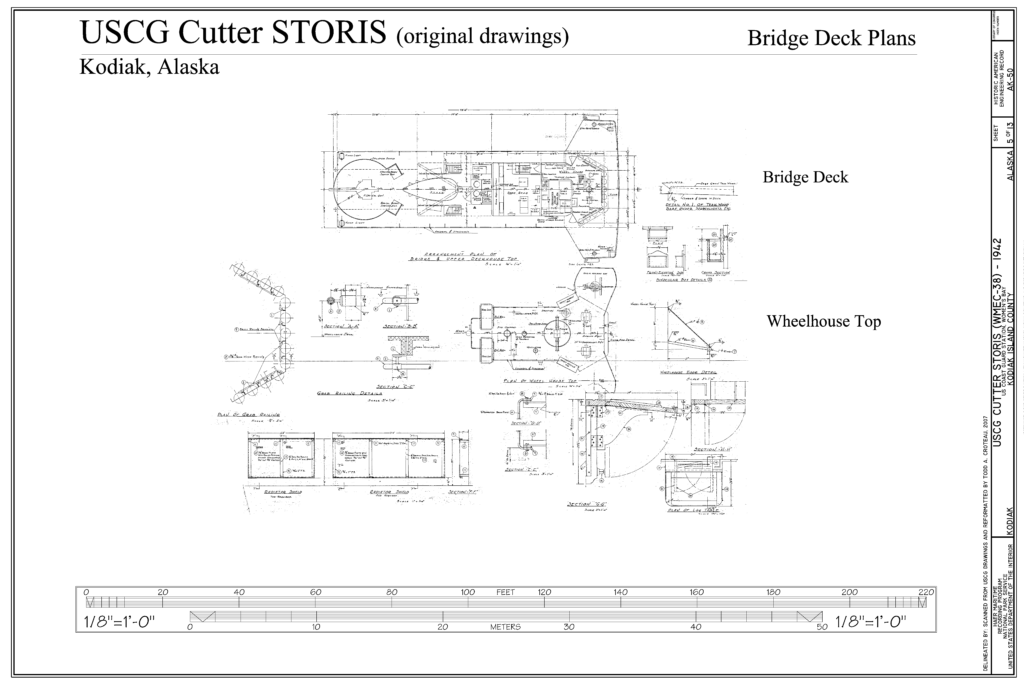
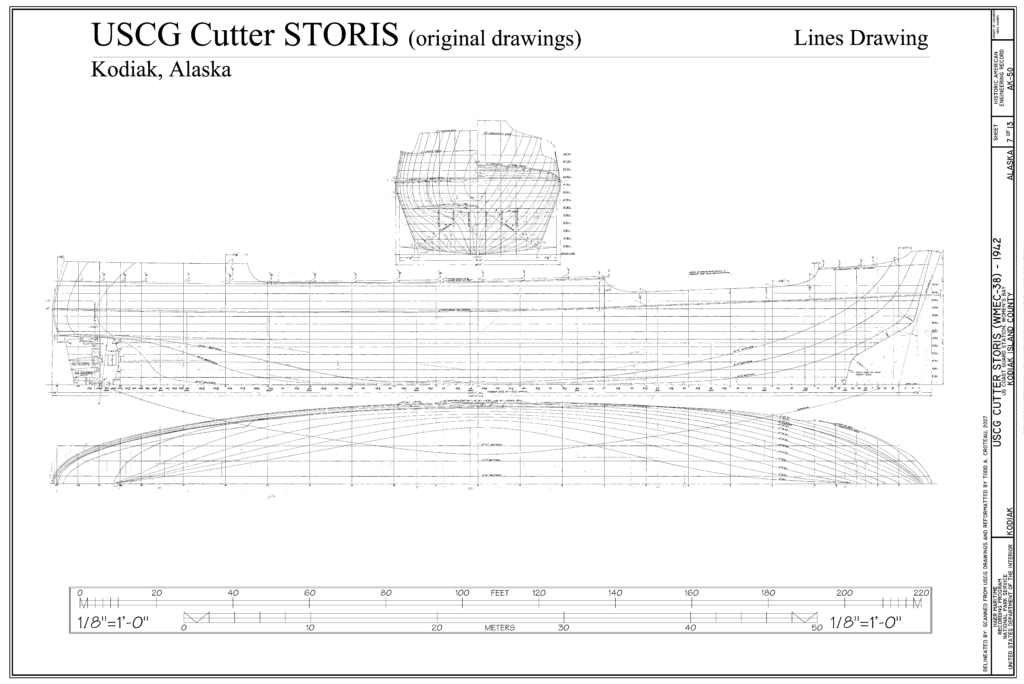
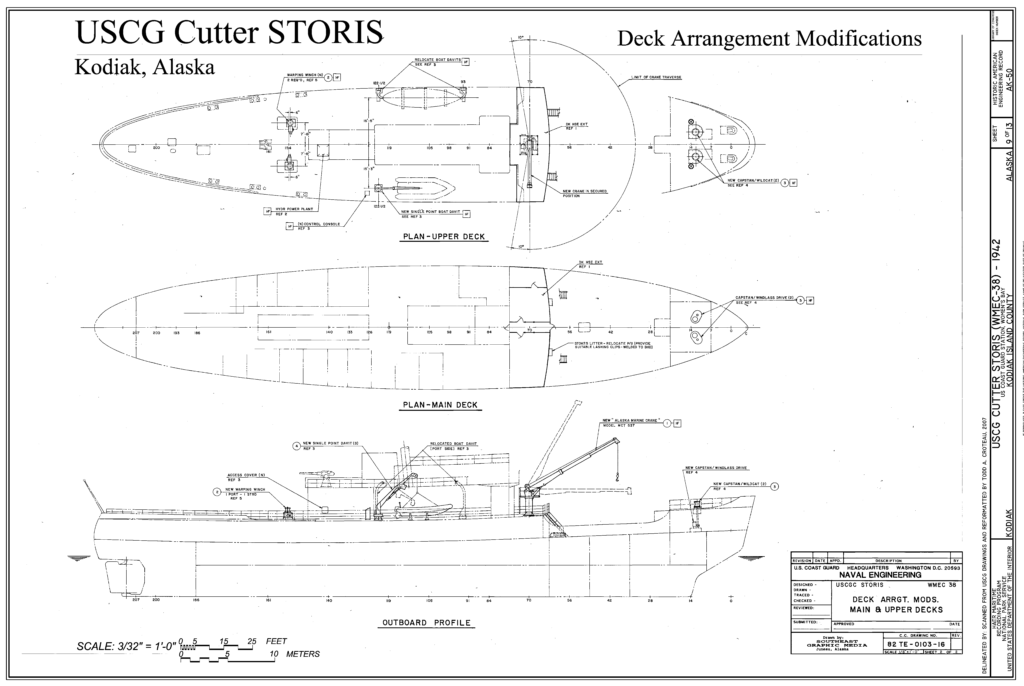
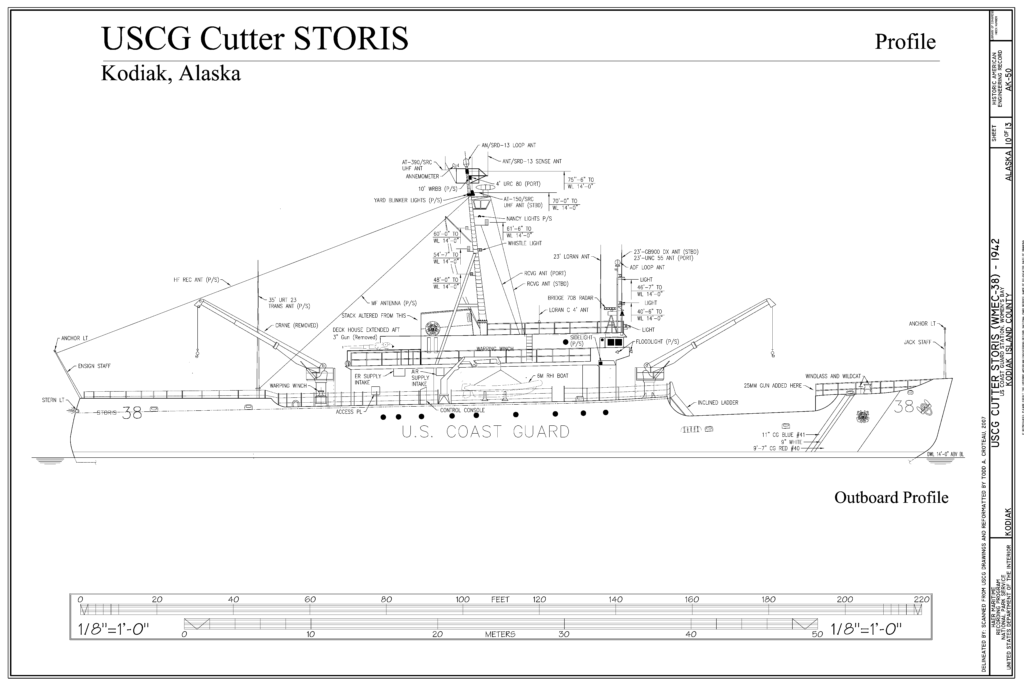
The Storis recording project was prepared under the direction of Tod Croteau, coordinator of the Historic American Engineering Record maritime program, and USCG environmental officer Susan Hathaway. Historian Brian Clayton prepared the historical narrative and Tod Croteau generated the vessel drawings from original Coast Guard records.